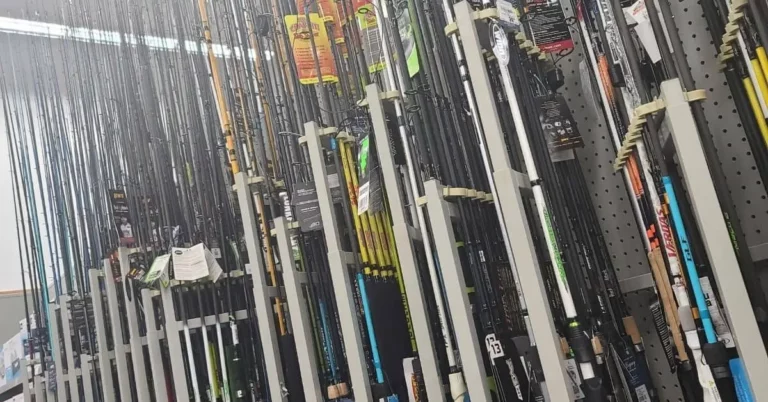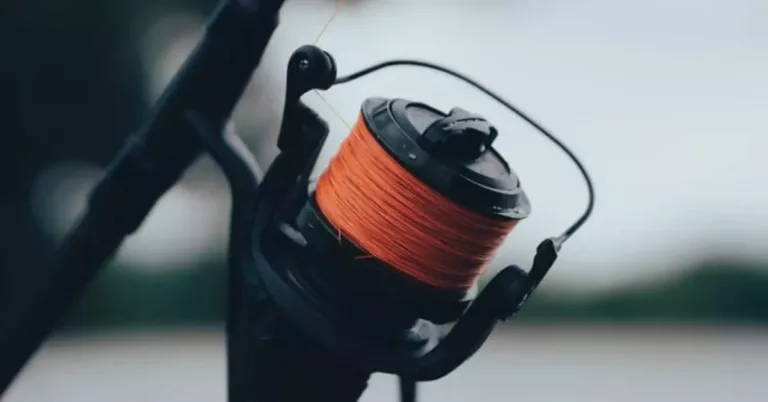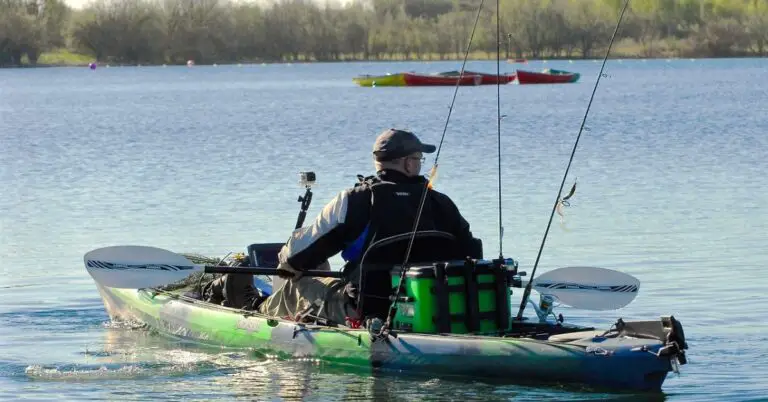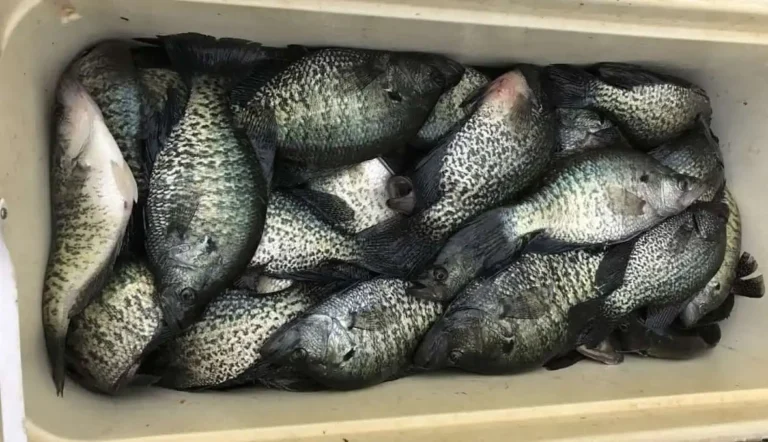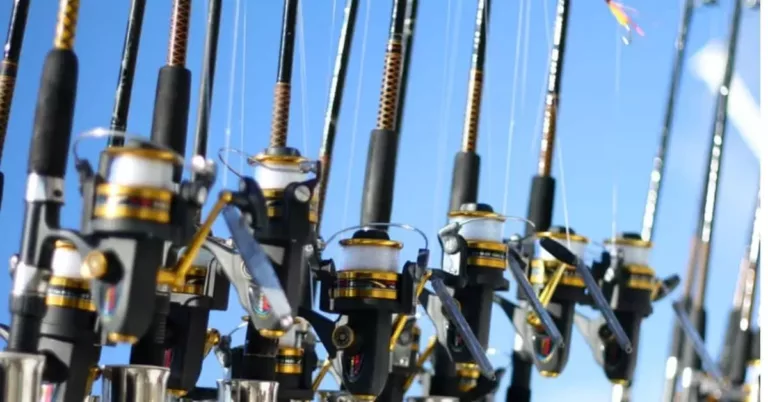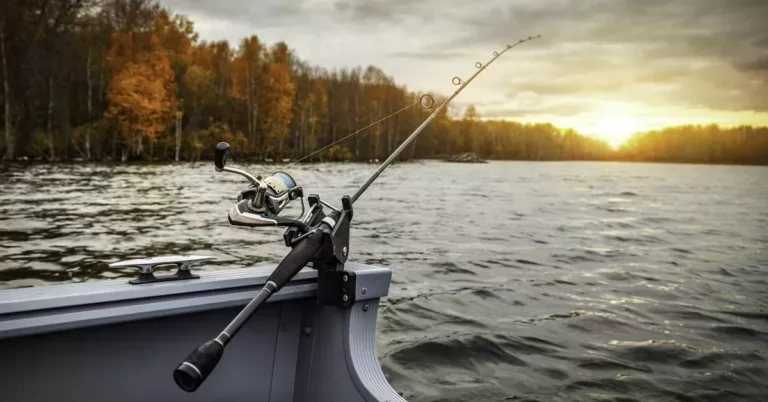The Ultimate Beginners Guide to Fishing With Swivels
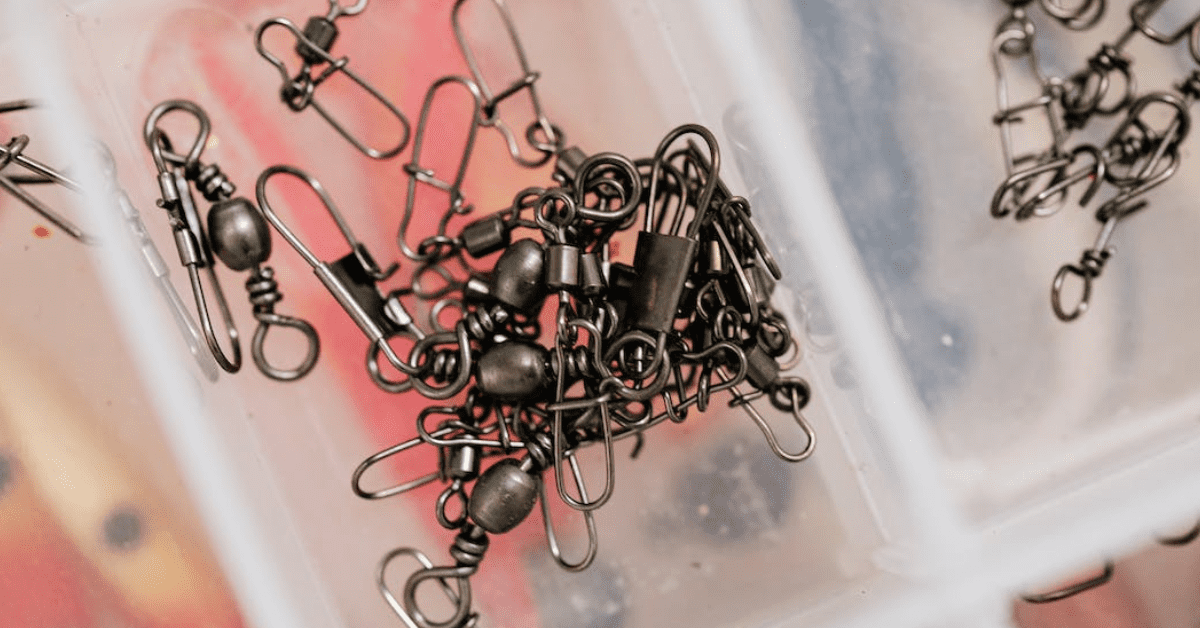
Sometimes it seems like there is more fishing gear than types of fish in the water. Everyone is familiar with the basics, things like rods, reels, lines, and hooks. Where the real anglers start to show their stuff though is in the more advanced tackle.
Knowledge of advanced tackle includes things such as when to use a specific type of lure, and how to use it, the differences in split shot and slip weights, and in today’s discussion, what swivels are and when to use each type for what type of fish, such as crappie.
So to jump right in, a swivel’s primary purpose is to avoid twists in your line, snap swivels have the added benefit of being able to quickly swap between various lures, but they have a drawback as well.
With that being said, let’s take a detailed dive into all things swivel, well in regards to freshwater fishing anyway.
What are Swivels Used For?
A swivel is actually a very simple device, it consists of two metal rings connected to a pivoting centerpiece. This pivoting centerpiece is what makes a swivel so useful for fishing.
When the line is cast from the reel the bait, air, water, and other factors all cause the line to twist. This is even more of an issue when dealing with lures or jigs that are designed to spin. A swivel helps to reduce this by allowing the bait or lure to spin without twisting the line.
Swivels may also be used to attach a steel leader or heavier weight of line at the end to help prevent line breakage from sharp objects.
The Problem Swivels Solve – Twisted Line
When a fishing line becomes twisted several things can happen. First, it becomes harder to reel in, this effect gets worse the more line you have out.
As the line is spun onto the reel, the twisted fibers can bunch up and cause knots that make it necessary to cut the line off and re-spool the reel.
Finally, line twists can weaken the line resulting in a lost fish if the line snaps while you have a lunker on the hook.
How a Swivel Works to Solve Line Twist
A swivel solves a line twist by letting the bait or lure spin independently of the line. This happens since the line from your rod is connected to one end of the swivel and the line to your hook or lure is connected to the other end.
As the bait or lure spins, the pivoting centerpiece allows the portion connected to the lure to spin freely without transferring this twist further up the line.
This pivoting effect can eliminate line twists caused by the lure, bait, and even a fighting fish that is twisting all around attempting to get off the hook.
Other Uses for Swivels
A swivel can also be used as a line stop. This effect can be to prevent weights or bobbers from moving past a designated point on the line. Often you want a slip weight to be able to move slightly so that you can feel a tug if your bottom fishing, this is an excellent place for a swivel.
You also have three-way swivels which allow you to connect the rod from your line and a hook to two of the eyes while attaching a float on a lead line to the third ring. This gives you some more options on how you intend to present the bait.
You can also flip this and instead of a float add a weight. An example of this is a drop rig, commonly used in trolling.
There are some advanced rigs that require multiple swivels on the same line. An example of this would be using a three-way swivel to add a second hook on a leader then continue down to the main hook.
An example of this would be a double hook dropper rig, most often used for saltwater fishing, however, it works very well for catfish as well.
Different Types of Swivels
Just like hooks, reels and floats there are multiple types of swivels that you are likely to encounter. Each of these has specific design characteristics that make them ideal for specific uses. Almost every one of these can be found in some form as a standard two-ring swivel, three-way swivel, and even a snap swivel.
Ball Bearing Swivel
A ball-bearing swivel is a very common type of swivel. They tend to be a bit larger than say a barrel swivel. But they are among the most dependable designs for handling heavy weights.
The design of these swivels also tends to be a bit more complicated, featuring a spindle shaft attached to one of the rings. This is then surrounded by tiny ball bearings and encased by an outer shell attached to the other ring.
This design allows them to hold more weight than some of the other swivels, but at an added cost due to the more advanced design. Their design also results in them being a bit bigger, and they aren’t used that often for smaller freshwater fish.
Barrel Swivel
The next swivel on the list is the barrel swivel. When talking about freshwater fishing this is the most likely one that comes to mind. They are much cheaper and simpler in design than a ball-bearing swivel.
Again these swivels have two or three rings attached to a centerpiece. The difference here is that each ring is attached to a small ball that is then encased in the centerpiece which clamps around them.
Due to this simple design not requiring any moving pieces inside of the centerpiece, they can be much smaller than some of the other swivel types. These smaller sizes make them harder for the fish to see.
Where these swivels lack though is in extreme weight capacity. They do not make good saltwater swivels in many cases. However, they are more than capable of handling nearly any freshwater fish you might encounter.
Finesse Swivel
A finesse swivel is similar to a barrel swivel, but they focus more on strength and ultra-light weight. Often these swivels are paired with lighter tackle and subtle fishing techniques in order to lure the fish into biting.
Finesse swivels tend to be smaller than the other types of swivels but of a higher quality build. Often they are made from stainless steel in order to gain extra strength despite their smaller size.
These types of swivels are very popular with bass anglers and when targeting panfish such as bluegills.
Snap Swivel
Snap swivels are not exactly a different type of swivel, so much as a variation that can be found in each of the above types.
The difference here is that instead of having two solid rings attached in the middle, they feature a solid ring on one side and a metal clip that can be undone so you can quickly switch out a leader line, hook or lure that is attached to the swivel.
This clip resembles a paperclip or a safety pin clip depending on how you look at it.
Some anglers do not like snap swivels as they feel they weaken the rig too much to be worth their use. A little further down, I have a chart that discusses the sizes and weight limits of various swivels, you can use that to help you decide if snap swivels are right for you.
I will tell you when you are not sure what the fish are biting and you want to be able to swap lures frequently they are definitely worth trying out.
(These size 14 Barrel Snap Swivels are the only snap swivels I buy they are just under 1 inch long and rated for around 26 pounds. More than what I need in almost every case.)
Different Swivel Materials
Brass
Brass is a very common option for fishing tackle, it tends to be moderately strong and inexpensive. Most of the hooks, swivels, and other tackle that appears gold in color is made of brass.
For nearly all of your panfish species and most other freshwater fish brass is strong enough to meet your needs, though it does tend to corrode a bit more than stainless steel does.
Often you can find nickel-plated brass options. These will be less likely to corrode than pure brass, additionally, they will be duller in color and can often be had in colors such as black or blue to make them blend in with darker waters better.
Keep in mind though these plated options are slightly weaker than their solid brass counterparts and much weaker than stainless steel.
Stainless Steel
Stainless steel is often the preferred option when choosing tackle, it is one of the strongest options available and doesn’t rust.
However, it tends to be a tad bit more expensive than some of the other materials. But worse than that it is almost always a very shiny silver color and this may be less than ideal in some situations or conditions.
Swivel Sizes and Strengths w Chart
Given that sizes and strengths will vary between different manufacturers and materials I am going to attempt to keep this list as generic as possible. Other brands will be somewhat similar and obviously, steel swivels will be stronger.
The chart is going to include the swivel size, length in inches, rated weight, and recommended line size if possible.
Stats based on the Goture Barrel Swivels Stainless Steel
| Size | Length | Capacity | Recommended Line Size |
| 14 | .51 | 22 | 17-pound test |
| 12 | .55 | 30 | 25-pound test |
| 10 | .62 | 35 | 30-pound test |
| 8 | .74 | 44 | 40-pound test |
| 6 | .86 | 59 | 60-pound test |
| 4 | .98 | 66 | 60-pound test |
| 2 | 1.10 | 100 | 60-pound test |
How to Use a Swivel
How to use a swivel is one of those things that can go on and on. It really depends on the style of fishing you are doing and what rig you want to set up.
But obviously, you came here for answers, not for me to tell you it depends.
So with that in mind, for a very simple setup take the line coming from your reel, and attach a float to it about 2 feet from the end. Now insert the end of the line into one of the rings on your swivel, and tie the line to the swivel at that point. Take a foot or two of the line and tie it to the other ring. Finally, tie a hook onto the end of that line, add a bit of split shot just above the hook and you have a very basic panfish bobber rig.
Another simple option is taking a line from your reel and tying it to a barrel snap swivel. You can now clip on any type of lure you like from a spoon to a crankbait.
Some other rigs that use a swivel include;
These are just a few and you can probably even come up with your own by experimenting with what works for you and the type of fishing you are doing.
Conclusion
Many people do not want to use swivels because they feel that it reduces your line strength and reduces the overall size of fish you can haul in. While it is true that your line becomes weaker with every knot or item you add to it, this weakness is negligible in most cases and is not likely to result in the loss of a fish.
For the average freshwater fisherman, you are never going to be fishing at the limit of your tackle unless you are targeting the monster man-sized catfish that live near the bottom of dams, or you are using ultralight tackle. Obviously each of these use cases is very specific and you will be using tackle geared towards those goals.
So don’t be afraid to tie on a swivel and see how it affects your fishing. I believe that you will quickly fall in love with snap swivels if you change lures frequently. Just make sure you get a snap swivel and not a standard snap. They do not provide the benefits of the swiveling action that you are looking for.

